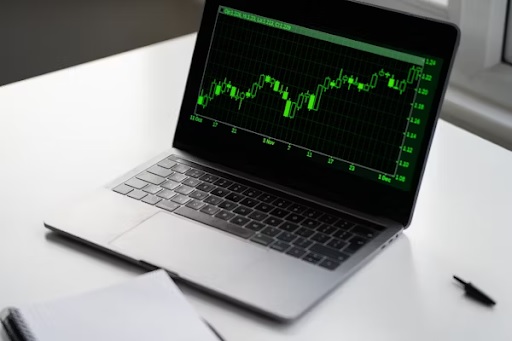Understanding Market Turbulence
The financial markets never proceed in a linear direction. There is always volatility that is full of potential and pitfalls that destroy or make trading accounts in minutes. At Binomo market, this fact is compounded by the binary options nature of the platform, where accuracy and timing mean success or failure. Volatility is caused by a variety of sources including economic releases, geopolitical tensions, corporate earnings reports, and unexpected news events. All of these contribute to price action that appears random to the naked eye yet has patterns that seasoned traders are able to identify.
Volatility Indicators Worth Watching
Some technical analysis indicators do quite well to pinpoint and measure market volatility. Average True Range (ATR) is particularly valuable for Binomo traders since it provides an idea of how much price action may be anticipated on specific time frames. Bollinger Bands provide another good perspective, where band width is a measure of levels of volatility and price position relative to bands is a measure of potential reversal points. The Relative Strength Index (RSI) is also very useful during chaotic periods, pointing out overbought and oversold levels that are prone to cause large-scale price reversals. The volume indicators are then used as a tool to supplement the same by confirming the intensity of the price swings, demarcating genuine trends from transitory peaks.
Timing Entry Points Amidst Chaos
Effective volatility trading is timing and waiting. Rather than moving into trades as soon as markets become volatile, experienced traders will wait until they identify certain confirmation indications. These might be candle pattern configurations like doji shapes at significant levels of support or resistance, or divergences of momentum that indicate future reversals of direction. The “trading the reaction” methodology is most valuable in conditions of volatility. Instead of trying to predict first market reactions to news events, this involves waiting for the second reaction of the market, which provides more conclusive direction signals with improved risk-reward ratios.
Risk Management in Turbulent Waters
Volatility also involves potential loss and gain, and effective risk management is essential. Position sizing is even more vital during periods of uncertainty, and most successful traders reduce their usual trade sizes under periods of high volatility to account for greater randomness. Stop-loss strategies have to consider unpredictable markets. Fixed-percentage stops are likely to get triggered prematurely by natural market volatility, while technically derived or volatility-based distance stops perform better. It is a matter of giving trades space to develop without safeguarding capital against big counter-moves.
Taking Advantage of Economic Calendars
Economic calendars are maps of pending volatility, which outline upcoming events that have the potential to create significant price action. Some of the major releases that give us anticipated times of increased market activity that might be exploited by clever traders include employment data, central bank announcements, and GDP releases. The period just prior to major announcements does provide great opportunity as markets consolidate on anticipation. The announcement periods generally experience the most violent price action, but also offer the highest risk with the potential for whipsaws and false breakouts.
Asset Selection During Turbulent Times
All assets do not respond to market volatility in the same manner. Pairs involving safe-haven currencies like the Swiss franc or Japanese yen will typically have distinct volatility profiles from emerging market currencies or commodity pairs. An understanding of these correlations helps in the selection of the optimal assets to apply to the current market condition. Commodity instruments tend to be more volatile under concerns of geopolitical tensions or supply chain disruption. Technology stocks will likely react more harshly to innovation or regulation news. Such asset-sensitive view allows the trader to focus energies on instruments most likely to provide clean trading signals.
Technical Analysis Adaptations
Classic technical analysis techniques need to be modified when volatility is very high. Trend lines need to be redrawn more frequently, and chart patterns can form sooner or with larger price action than usual. Moving averages can generate more false signals and need to be verified by other means. Support and resistance levels are even more important during volatile phases because these are the levels at which institutional players will try to move. Breakouts do, nevertheless, tend to be more violent in nature and less heralded by warning, requiring faster decision-making and action.
Building Volatility-Proof Strategies
Successful volatility trading strategies will utilize multiple timeframe analysis, utilizing longer timeframes to establish the overall direction of the market and smaller timeframes to provide precise entry and exit points. It allows filtering out of noise within the market and capture of actual price action. Diversification over time horizons and asset classes can reduce performance through difficult periods. Rather than having all one’s eggs in one basket, as it were, diversified activity over a spectrum of opportunity lessens the impact of any one bad outcome.
Advanced Order Management
More advanced order management is necessary in the case of unstable market conditions. A few of these are the application of multiple exit strategies, scaling out in winning trades, and adjusting stop-losses with dynamic market conditions rather than maintaining static levels over the course of the trade. The concept of “volatility stops” is to place stop-loss at levels relative to current market volatility rather than as fixed percentage levels. The technique prevents premature stop-outs amid normal market noise while continuing to provide protection against an out-of-the-ordinary bear move. Volatility in the market embodies the greatest opportunity and greatest risk in trading. Profitability requires adaptation of strategies, adherence to them, and respect for the additional uncertainty volatile markets bring to financial markets.


